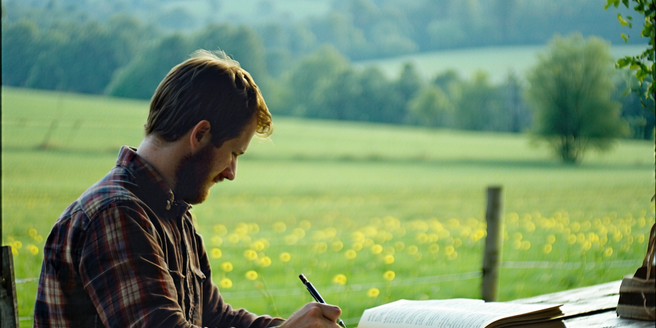Free Stock Photo Resources

Understanding Creative Commons Licensing
| License Type | Description | Use Cases |
| CC BY | Allows distribution, remix, adaptation, even commercially, as long as credit is given to the creator. | Ideal for bloggers and businesses needing flexibility. |
| CC BY-SA | Same as CC BY, but adapted works must be licensed under identical terms. | Useful for collaborative projects and Wikipedia content. |
| CC BY-ND | Allows redistribution, commercial and non-commercial, without derivative works. | Good for sharing original content without modifications. |
| CC BY-NC | Lets others remix, adapt, and build upon the work non-commercially. | Perfect for educators and personal projects. |
| CC BY-NC-SA | Non-commercial sharing and remixing allowed under the same terms. | Great for community projects and academic use. |
| CC BY-NC-ND | Most restrictive, allowing others to download and share non-commercially. | Best for authors who do not want adaptations of their work. |
Top Websites for Quality Free Images
Finding high-quality free images has never been easier with the abundance of resources available online. Websites like Unsplash, Pexels, and Pixabay are go-to platforms for stunning, royalty-free photos. These platforms have user-friendly search functions and diverse collections curated by talented photographers. Unsplash, for instance, offers a wide variety of images across different categories and is favored for its artistic photography. Pexels stands out for its integration with graphic design tools, making it easier to create design projects seamlessly. Meanwhile, Pixabay provides not only photos but also illustrations and vector graphics to suit broader creative needs. Using these resources can save both time and money, providing access to a wealth of visual content without compromising on quality. The ease of use and quality of imagery make them an excellent choice for all types of digital media projects.
How to Choose the Right Image for Your Needs
Selecting the perfect image goes beyond aesthetics, requiring consideration of several factors. First, ensure the image aligns with your brand’s voice and messaging. Consider the mood and emotions the image conveys, as these should resonate with the intended audience. It’s also important to assess the image composition for clarity, focus, and balance, as well-composed images communicate professionalism. Review the context in which the image will be used; for instance, ensuring it fits the narrative of a blog post or the purpose of a social media campaign. Resolution is another critical factor; higher resolution images are essential for print publications while smaller-sized images suffice for web content. Lastly, double-check licensing agreements, ensuring the image is cleared for your intended use, whether commercial or personal. Carefully evaluating these facets will enhance the effectiveness of the visual content you choose.
Tips for Searching Efficiently
Streamlining the process of finding the perfect stock photo involves using efficient search techniques. Start by using specific keywords rather than general terms to zero in on images that fit your theme. Many stock photo sites offer advanced search filters, so take advantage of them to narrow down your choices by color, orientation, or style. Tags can also be beneficial; they help to categorize images, so understanding tag systems can guide you to exactly what you need. Consider sorting images by popularity or latest uploads for quick access to trendy or novel content. If you’re working on a recurring project, save time by creating curated collections of images that match your usual style or subject matter. Lastly, check related image suggestions often provided by platforms to discover alternatives that might suit your needs even better. Efficient search strategies will save invaluable time during project execution.
Differences in Image Quality Across Platforms
Quality varies across stock photo platforms due to different standards and photographer contributions. Platforms like Shutterstock offer high-quality stock images for purchase with their extensive vetting process, ensuring image quality consistency and professional standards. In contrast, free sites like Unsplash and Pexels rely on community contributions, which can lead to more variability in image quality. However, these platforms still maintain high standards by featuring top images and photographers, ensuring only quality content rises to the top. Differences also arise in resolution options; premium platforms typically provide multiple download sizes, whereas free sites may offer limited resolutions. Image styles and compositions can also differ, reflecting each platform’s unique community and photographer base. Understanding each platform’s attributes helps select the best one suited to your project’s needs, balancing budgetary constraints with quality requirements.
Legal Considerations When Using Free Photos
When utilizing free photos, legal considerations are paramount to avoid copyright infringement. One must understand the licensing agreement attached to each image and adhere to the specified terms, such as attribution requirements. Creative Commons licenses are commonly used, offering various usage rights; however, each license type specifies different permissions and limitations. Additionally, be cautious with trademarked elements within images, such as brand logos or identifiable products, which can lead to legal disputes if used improperly. Privacy rights also come into play when people are recognizable in photos, necessitating model releases for commercial use. Avoid assuming all free images are cleared for any use; diligent verification through license reading and checking for any watermarks is necessary. By thoroughly understanding and correctly implementing these legal considerations, creators can confidently use free stock photos in their projects.
How to Credit Photographers Correctly
Giving proper credit to photographers is not only a courteous act but often a legal requirement when using free stock images. It’s essential to check the requirements specified in the image’s licensing agreement—some may require a simple attribution, while others specify a particular format. The most common way to credit is by including the photographer’s name and a link to the image source or photographer’s portfolio. This credit line can typically be included at the bottom of the article, in the image caption, or within image metadata. Always strive to honor the credit guidelines specified by the license, potentially increasing your work’s credibility and supporting the photographer’s exposure and creative endeavors. When in doubt, reach out to photographers directly to understand their preferences, fostering a culture of respect and collaboration in the creative community.
Leveraging Images for Social Media Success
Images are a powerful tool for social media marketing, vastly enhancing engagement and reach. The visual nature of platforms like Instagram and Pinterest underscores the need for captivating images to attract and maintain audience interest. Using vibrant, high-quality images increases the likelihood of users pausing to view your posts, especially in visually driven feeds. Integrating branded colors, typography, and relatable content tailored to your audience boosts brand recognition and loyalty. Beyond individual posts, strategically using images in paid social media campaigns can significantly impact click-through rates and conversion success. Consider storytelling through sequential images or utilize images for promotional content, such as engaging infographics and memes. Analytics tools can further guide image selection by revealing which visuals resonate most with your audience, empowering your brand to continuously refine and optimize its social media strategy for success.
Combining Stock Photos with Original Content
Incorporating a mix of stock photos with your own content can lead to visually compelling and unique creations. Stock photos provide a foundation or complement original images, adding diversity to your visuals without the high costs of professional photography. To create a cohesive aesthetic, maintain a consistent theme with complementary colors and styles across stock and original photos. Stock images are also useful for brainstorming concepts or enhancing your visual storytelling by filling narrative gaps. For instance, mixing them with personal photos or branding elements can result in unique infographics and engaging social media graphics. Editing tools enable seamless blending, ensuring harmony between stock and original images while allowing you to infuse your brand’s personality. Combining both types of images effectively elevates your content strategy by marrying affordability with originality, enhancing overall visual appeal.
Future Trends in Stock Photo Resources
The landscape of stock photo resources is continually evolving, adapting to current artistic trends and technological advancements. One significant trend is the increasing demand for more authentic, diverse, and inclusive images that resonate with broader audiences and reflect global realities. The rise of AI-driven tools is shaping a future where stock images can be generated and personalized to specific user needs, offering unprecedented customization options. Additionally, interactive and 3D content is gaining traction, paving the way for more immersive visual experiences. Subscription models are evolving to offer more flexible pricing and access plans tailored to varied user needs. With the growing emphasis on visual storytelling and user-generated content, platforms are leveraging community contributions to innovate and expand image libraries. Adapting to these trends ensures that stock photo resources remain relevant and responsive to creators’ changing demands.
